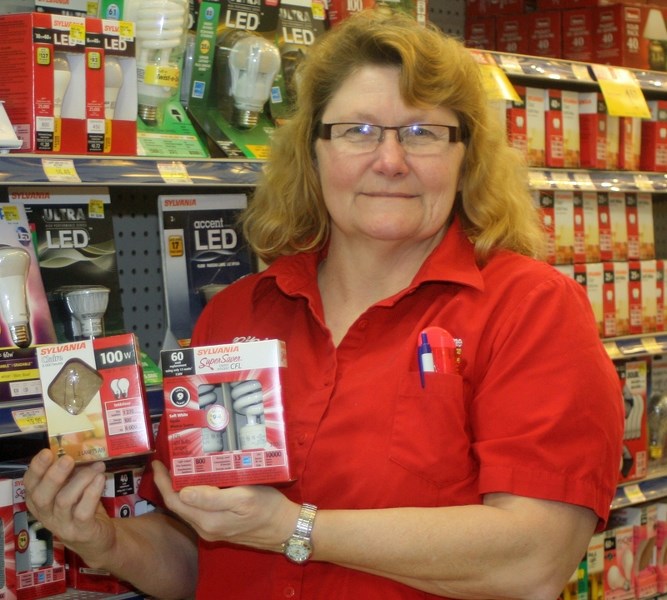Seventy-five and 100-watt incandescent light bulbs will disappear from store shelves after Jan. 1under federal government regulation.
Forty and 60-watt bulbs are due to be phased out beginning Dec. 31, 2014. The bulbs are being replaced by more energy efficient light bulbs such as compact fluorescent lamps (CFLs).
Tasha Bieber, manager of Olds' B and M Home Hardware Building and Garden Centre, said the number of sales of incandescent bulbs at her store is about equal with CFLs, but in many cases people prefer CFLs because they last longer. Bieber said she uses CFLs in her own home and has replaced one in seven years.
“So it's quite a change from (changing a bulb) every four or five months with an incandescent,” she said.
Mike Asaris, owner of Olds' Canadian Tire, said he hasn't seen a run on the incandescent bulbs in light of the ban coming in the new year.
“No. Not in our market. People are coming out to buy a bunch of bulbs,” he said.
CFLs are significantly more expensive and some people have raised safety concerns about the mercury content in them. The glass of a CFL bulb is prone to breaking, which could lead to possible exposure to mercury.
Health Canada advises that people handle the bulbs carefully, especially if they have skin sensitivities to ultraviolet (UV) light or auto-immune diseases such as lupus that make them sensitive to UV light. In that case, Health Canada advises buying low-UV bulbs or using additional filters on the bulbs to decrease the level of UV exposure.
If a CFL breaks, some of the steps people are advised to take include ventilating the room to the outdoors for at least 15 minutes to allow mercury vapours to escape. People are advised not to vacuum any broken pieces of the bulb since this can cause the mercury vapours to spread. People are also advised to wear disposable gloves during cleanup to avoid contact with the mercury and prevent cuts, use two pieces of cardboard rather than a broom to sweep up the mess and wipe the area with a damp disposable paper towel or cloth to remove residual particles. People are also advised to dispose of the waste as soon as possible at a hazardous waste collection site and to not dispose of the waste with household trash.
Sean Upton, a Health Canada spokesman, said in response to the public's concerns about CFLs, Health Canada conducted UV radiation and electro-magnetic field tests on a range of CFL bulbs and submitted the final report to Natural Resources Canada, which commissioned the tests. In an email, Upton said the mercury levels in CFLs pose little risk to human health.
“Only a very small amount is used in a CFL, about the amount to cover the tip of a ballpoint pen. There is no risk to your health when the lamps are unbroken,” he wrote. “Even when a CFL is broken, there is very low risk to your health, unless you mishandle it or store it carelessly.”



